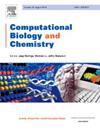Identify the key genes and pathways of melatonin in age-dependent mice hippocampus regulation by transcriptome analysis
IF 2.6
4区 生物学
Q2 BIOLOGY
引用次数: 0
Abstract
Context
Dysregulation of energy metabolism is a fundamental contributor to all the hallmarks of brain aging. Melatonin, primarily secreted by the pineal gland, is closely associated with molecules and signaling pathways that sense and affect energy metabolism. However, the impact of melatonin on age-related mRNA expression in the hippocampus of mice at different ages remains poorly understood.
Objective
The present study conducted transcriptome analysis of the hippocampus in melatonin-exposed mice at 9, 13, and 25 months of age. Differential gene analysis, GO and KEGG pathway enrichment analysis, GSEA analysis, as well as weighted gene co-expression network analysis (WGCNA), were performed on the transcriptome data.
Results
Our study demonstrated that melatonin exerts a more pronounced regulatory effect on the transcriptome of 25-month old mice, and significantly enhances the expression level of TTR in the hippocampus of 13-month old mice. WGCNA analysis revealed that melatonin primarily modulates the energy metabolism of mouse hippocampus through the mTOR signaling pathway and AMPK signaling pathway.
Conclusions
In conclusion, our study provides new insights into the comprehensive understanding of the mechanism of melatonin's age-dependent regulation of the mice hippocampus.
通过转录组分析确定褪黑激素在年龄依赖性小鼠海马调控中的关键基因和通路
背景能量代谢失调是导致大脑衰老的根本原因。褪黑激素主要由松果体分泌,与感知和影响能量代谢的分子和信号通路密切相关。然而,褪黑激素对不同年龄小鼠海马中与年龄相关的 mRNA 表达的影响仍然知之甚少。结果我们的研究表明,褪黑激素对25月龄小鼠的转录组具有更明显的调控作用,并显著提高了13月龄小鼠海马中TTR的表达水平。结论总之,我们的研究为全面了解褪黑激素对小鼠海马的年龄依赖性调控机制提供了新的见解。
本文章由计算机程序翻译,如有差异,请以英文原文为准。
求助全文
约1分钟内获得全文
求助全文
来源期刊

Computational Biology and Chemistry
生物-计算机:跨学科应用
CiteScore
6.10
自引率
3.20%
发文量
142
审稿时长
24 days
期刊介绍:
Computational Biology and Chemistry publishes original research papers and review articles in all areas of computational life sciences. High quality research contributions with a major computational component in the areas of nucleic acid and protein sequence research, molecular evolution, molecular genetics (functional genomics and proteomics), theory and practice of either biology-specific or chemical-biology-specific modeling, and structural biology of nucleic acids and proteins are particularly welcome. Exceptionally high quality research work in bioinformatics, systems biology, ecology, computational pharmacology, metabolism, biomedical engineering, epidemiology, and statistical genetics will also be considered.
Given their inherent uncertainty, protein modeling and molecular docking studies should be thoroughly validated. In the absence of experimental results for validation, the use of molecular dynamics simulations along with detailed free energy calculations, for example, should be used as complementary techniques to support the major conclusions. Submissions of premature modeling exercises without additional biological insights will not be considered.
Review articles will generally be commissioned by the editors and should not be submitted to the journal without explicit invitation. However prospective authors are welcome to send a brief (one to three pages) synopsis, which will be evaluated by the editors.
 求助内容:
求助内容: 应助结果提醒方式:
应助结果提醒方式:


